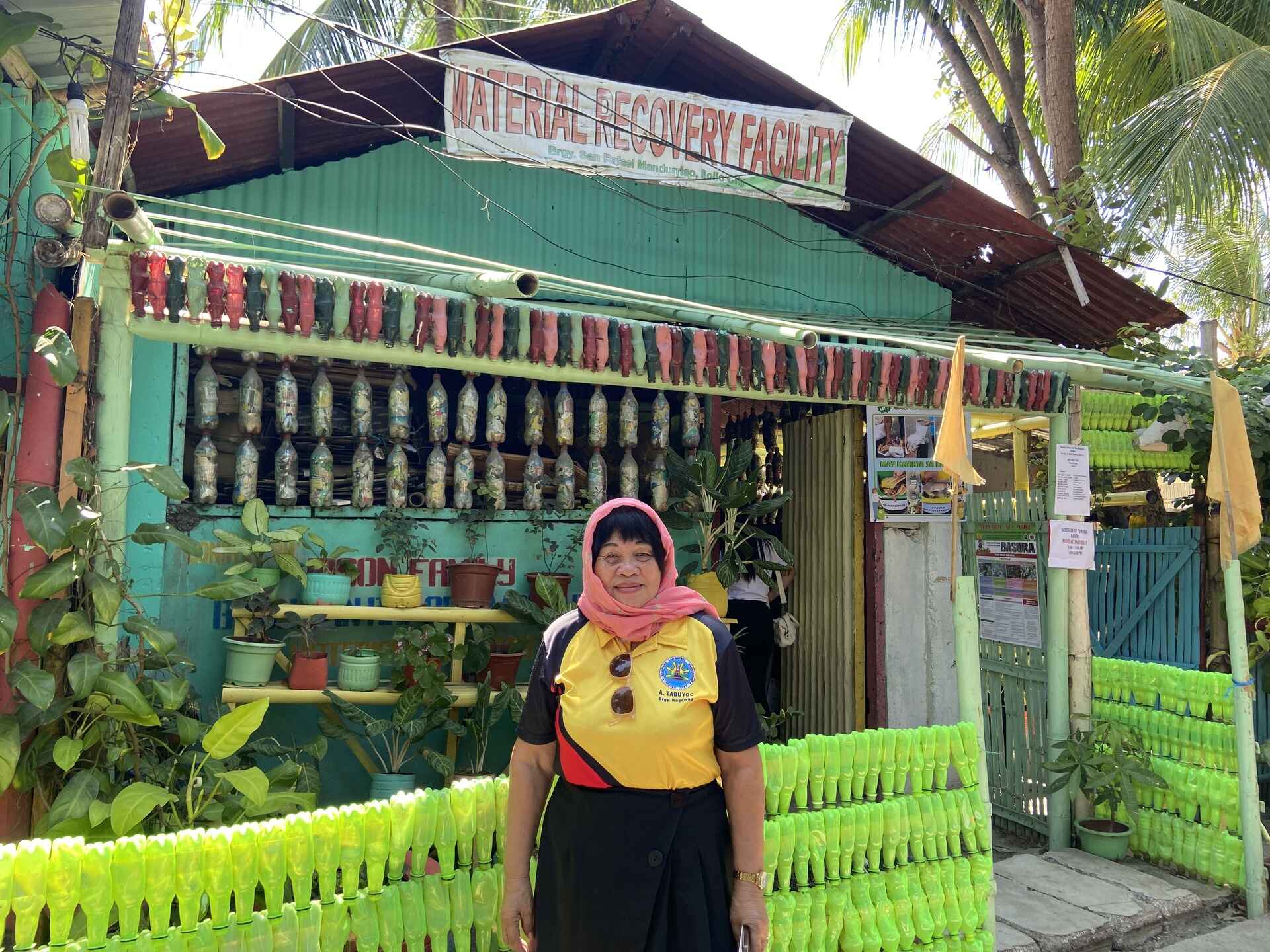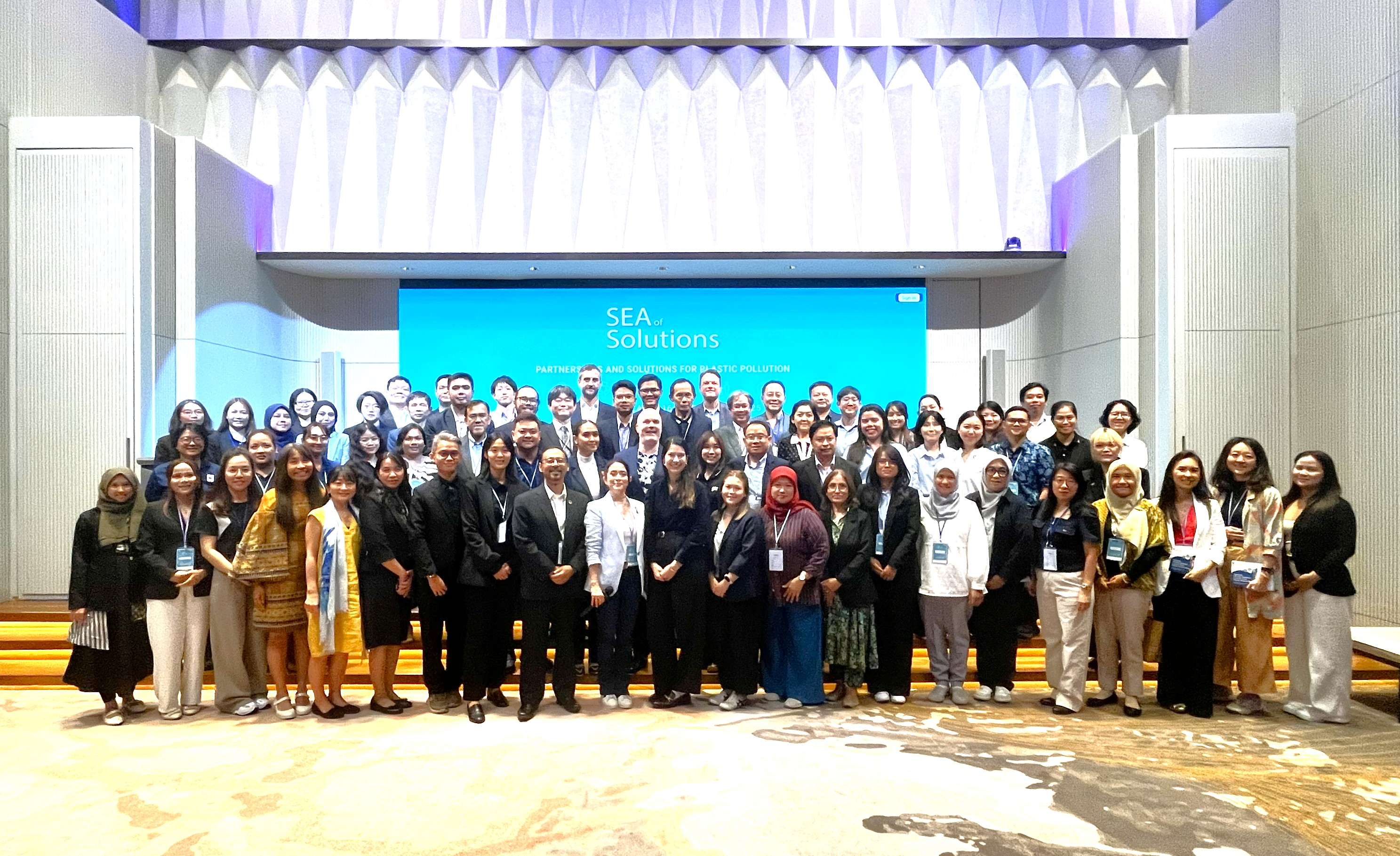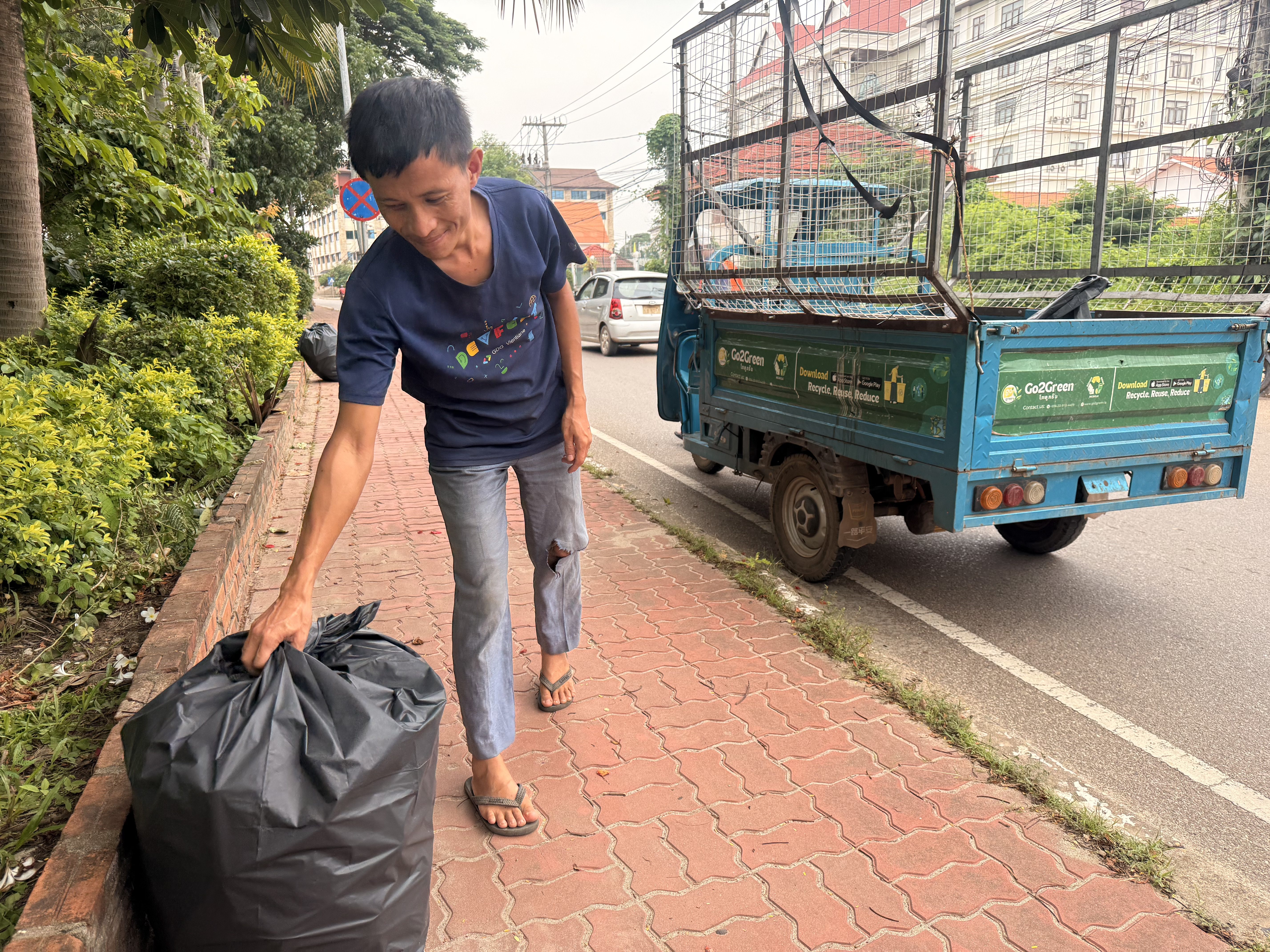

Iloilo City, 21 March 2024: Iloilo City, located at the heart of the vast Philippine archipelago, holds a significant prominence over the course of history, once earning the title of the Queen City of the South and receiving the prestigious ASEAN Clean Tourist City award in 2020. Despite its accolades, the city grapples with the challenges that come with its rapid growth, contending with issues such as plastic pollution which jeopardises its mangrove ecosystem and bustling fishing port activities.
As part of the 3rd Regional Workshop of the Deutsche Gesellschaft für Internationale Zusammenarbeit (GIZ) Reduce, Reuse and Recycle to Protect the Marine Environment and Coral Reefs (3RproMar) project, Iloilo City welcomed participants from across the region to exchange knowledge and practices aligned with the objectives of the Global Plastics Treaty. Workshop attendees embarked on field visits around the city on 21 March to witness first-hand its efforts in combatting plastic pollution.
Also read: Promoting Knowledge Transfer for Marine Litter Prevention in ASEAN: GIZ 3RproMar Workshop
As participants arrived at their first destination in Barangay San Rafael of Mandurian District, they were greeted by Ms Asubon Tabuyoc, a former captain of the barangay, who now manages the material recovery facility (MRF). The MRF features a unique component – a small convenience store, locally known as a sari-sari store, which operates on a system of recyclable waste as exchange currency.
Displayed within the store is a price table denoting the values assigned to various recyclables such as paper cartons, glass bottles, aluminium cans, PET bottles, and soft plastics. Surrounding households can exchange 2 kilograms of PET bottles for a bag of salt or other necessities. Ms Tabuyoc emphasised the impact of these economic incentives: ‘With the system offered by our sari-sari store, communities are not only encouraged to start waste segregation but also to perceive waste as valuable resources.’
With the system offered by our sari-sari store, communities are not only encouraged to start waste segregation but also perceive waste as valuable resources
Ms Asubon Tabuyoc, manager of the material recovery facility in Barangay San Rafael
Upon collection, the gathered waste finds its place in the MRF’s warehouse, awaiting either processing or sale to recyclers. Ms Tabuyoc, alongside her team of women, transforms PET bottles into decorative flowers and shredded soft plastics into pillow fillings. These handcrafted items are then sold as souvenirs, with prices starting from 50 Filipino pesos (0.9 USD) each.
In addition to managing inorganic waste, the MRF also accepts organic waste for composting purposes. The finished compost is both sold and utilised in the MRF's community vegetable garden. Occasionally, the garden’s produce is harvested and used to prepare meals for students at a nearby school.
The MRF also provides local communities with an extra income source, as well as additional revenue streams for the barangay administration, supporting waste diversion efforts while fostering sustainability.
A portion of the collected waste undergoes further processing at the central MRF in the city, where it is shredded into smaller materials. Bags containing 70 kilograms of these fine low density plastic residuals can be seen lined up on a truck as participants enter Cemex Inc’s warehouse in Iloilo Port. Priced at 1 Filipino peso per kilogram, the plastic residuals are destined for Cebu Island to be utilised in co-processing for cement manufacturing.
Similar to practices observed in other parts of the world, the Philippines is diverting some of its plastic waste by incorporating it into cement kilns. Here, plastic waste serves as a substitute for natural resources during the heating stage of cement manufacturing. The high temperatures within the cement kilns effectively consume plastic waste, reducing its potential leakage into the environment.
However, in cases where plastic waste has already found its way into water systems, Iloilo City has taken proactive measures by setting up modular sewage treatment plants (MSTPs) along the banks of the Iloilo River. These MSTPs act as a last line of defence, preventing plastic waste from leaking into the ocean. During the field visit, participants had the opportunity to look closely at an MSTP in Barangay Callubian and engage in discussions with local stakeholders.
Designed to treat wastewater from adjacent community areas, the plants accommodate around 30 to 50 households interconnected across barangays. With a daily treatment capacity ranging from 25 to 35 cubic meters of water, the plants enhance effluent quality and trapped solid waste before discharge into local rivers. Plastics are the most abundant of the materials filtered through, underscoring MSTP efficacy in supporting Iloilo City’s fight against plastic pollution.
Iloilo City, 21 March 2024: Iloilo City, located at the heart of the vast Philippine archipelago, holds a significant prominence over the course of history, once earning the title of the Queen City of the South and receiving the prestigious ASEAN Clean Tourist City award in 2020. Despite its accolades, the city grapples with the challenges that come with its rapid growth, contending with issues such as plastic pollution which jeopardises its mangrove ecosystem and bustling fishing port activities.
As part of the 3rd Regional Workshop of the Deutsche Gesellschaft für Internationale Zusammenarbeit (GIZ) Reduce, Reuse and Recycle to Protect the Marine Environment and Coral Reefs (3RproMar) project, Iloilo City welcomed participants from across the region to exchange knowledge and practices aligned with the objectives of the Global Plastics Treaty. Workshop attendees embarked on field visits around the city on 21 March to witness first-hand its efforts in combatting plastic pollution.
Also read: Promoting Knowledge Transfer for Marine Litter Prevention in ASEAN: GIZ 3RproMar Workshop
As participants arrived at their first destination in Barangay San Rafael of Mandurian District, they were greeted by Ms Asubon Tabuyoc, a former captain of the barangay, who now manages the material recovery facility (MRF). The MRF features a unique component – a small convenience store, locally known as a sari-sari store, which operates on a system of recyclable waste as exchange currency.
Displayed within the store is a price table denoting the values assigned to various recyclables such as paper cartons, glass bottles, aluminium cans, PET bottles, and soft plastics. Surrounding households can exchange 2 kilograms of PET bottles for a bag of salt or other necessities. Ms Tabuyoc emphasised the impact of these economic incentives: ‘With the system offered by our sari-sari store, communities are not only encouraged to start waste segregation but also to perceive waste as valuable resources.’
With the system offered by our sari-sari store, communities are not only encouraged to start waste segregation but also perceive waste as valuable resources
Ms Asubon Tabuyoc, manager of the material recovery facility in Barangay San Rafael
Upon collection, the gathered waste finds its place in the MRF’s warehouse, awaiting either processing or sale to recyclers. Ms Tabuyoc, alongside her team of women, transforms PET bottles into decorative flowers and shredded soft plastics into pillow fillings. These handcrafted items are then sold as souvenirs, with prices starting from 50 Filipino pesos (0.9 USD) each.
In addition to managing inorganic waste, the MRF also accepts organic waste for composting purposes. The finished compost is both sold and utilised in the MRF's community vegetable garden. Occasionally, the garden’s produce is harvested and used to prepare meals for students at a nearby school.
The MRF also provides local communities with an extra income source, as well as additional revenue streams for the barangay administration, supporting waste diversion efforts while fostering sustainability.
A portion of the collected waste undergoes further processing at the central MRF in the city, where it is shredded into smaller materials. Bags containing 70 kilograms of these fine low density plastic residuals can be seen lined up on a truck as participants enter Cemex Inc’s warehouse in Iloilo Port. Priced at 1 Filipino peso per kilogram, the plastic residuals are destined for Cebu Island to be utilised in co-processing for cement manufacturing.
Similar to practices observed in other parts of the world, the Philippines is diverting some of its plastic waste by incorporating it into cement kilns. Here, plastic waste serves as a substitute for natural resources during the heating stage of cement manufacturing. The high temperatures within the cement kilns effectively consume plastic waste, reducing its potential leakage into the environment.
However, in cases where plastic waste has already found its way into water systems, Iloilo City has taken proactive measures by setting up modular sewage treatment plants (MSTPs) along the banks of the Iloilo River. These MSTPs act as a last line of defence, preventing plastic waste from leaking into the ocean. During the field visit, participants had the opportunity to look closely at an MSTP in Barangay Callubian and engage in discussions with local stakeholders.
Designed to treat wastewater from adjacent community areas, the plants accommodate around 30 to 50 households interconnected across barangays. With a daily treatment capacity ranging from 25 to 35 cubic meters of water, the plants enhance effluent quality and trapped solid waste before discharge into local rivers. Plastics are the most abundant of the materials filtered through, underscoring MSTP efficacy in supporting Iloilo City’s fight against plastic pollution.

Research Associate



